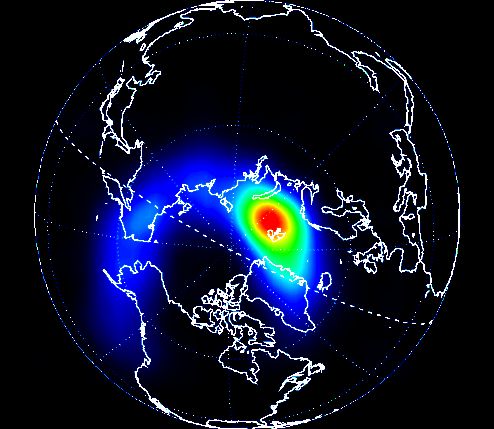
|
Explanation: Above is a picture of the Earth in x-rays, taken in March of 1996 from the orbiting Polar satellite. Most of the planet is dark with superposed continent and coordinate grids, while the bright x-ray emission near the north pole is shown in red. Why does the Earth have an x-ray glow? Actually, the Earth itself does not, but the aurora high in the Earth's atmosphere do glow with x-rays detectable by space-based instruments. Gusts of energetic ions from the Sun can distort the Earth's magnetosphere allowing high energy electrons spiraling along magnetic field lines to slam into the upper atmosphere above the magnetic poles. This activity causes shimmering visible aurora along with x-ray, ultraviolet, and radio emission. The x-rays are not dangerous to life on Earth because they are absorbed by the dense, lower atmosphere.
|
January February March April May June July August September October November December |
| ||||||||||||||||||||||||||||||||||||||||||||||||
NASA Web Site Statements, Warnings, and Disclaimers
NASA Official: Jay Norris. Specific rights apply.
A service of: LHEA at NASA / GSFC
& Michigan Tech. U.
Based on Astronomy Picture
Of the Day
Publications with keywords: aurora - Earth
Publications with words: aurora - Earth
See also:
- APOD: 2025 December 8 Á Flying Over the Earth at Night
- APOD: 2025 September 7 Á All the Water on Planet Earth
- APOD: 2025 June 15 Á Two Worlds One Sun
- APOD: 2025 January 7 Á A New Years Aurora and SAR Arc
- APOD: 2024 December 29 Á Methane Bubbles Frozen in Lake Baikal
- APOD: 2024 December 8 Á Aurora around Saturns North Pole
- Interplanetary Earth
